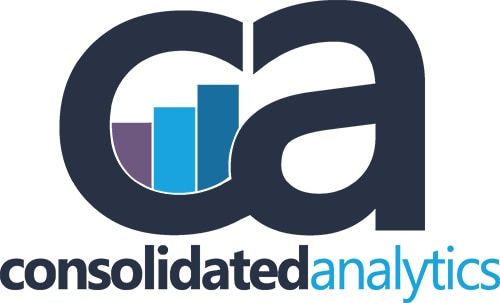In the course of a mortgage originator’s business, few decisions are more important than selecting a Loan Origination System (LOS) system and vendor partner. In fact, there is a clear interdependence between operational performance and platform performance. Effective and well-thought-out processes ensure a business is getting the full advantage of their platform while a powerful, automated system can alter business strategy, drive profitability, and deliver operational efficiencies.
Indeed, lending institutions are critically dependent on their LOS and vendor partner for more than streamlining loan manufacturing: a system’s functions and capabilities influence bottom-line and top-line performance across the board, including cost-structure and cost-control, staff productivity, headcount, turn-times, and customer experience. Today, the increased prevalence of automation technology and digital services compounds the importance and complexity of the decision. As technology rapidly evolves, lenders need to carefully evaluate which LOS will position them best for the future while addressing core operational needs?
How lenders juxtapose core operational needs with rapid advancements in automation?
Answering the Call for Advancement
In recent years, demands for improved customer experience and digital efficiency have driven the creation of multiple FinTech Point of Sale (POS) systems, automated third-party data verification services, and improvements in GSE eligibility and approval capabilities. Currently, there are  approximately 25 POS vendors competing in the mortgage origination space. As a result of this competition and the need to gain clients and market share by expanding capabilities, some functionality and workflow that used to exist exclusively in the LOS now reside in both the LOS and the POS (duplicated). While these front-end systems have improved the borrower experience and pushed verification functionality closer to the loan application, they cannot currently replace the full due diligence and system of record functionality that the LOS still owns.
approximately 25 POS vendors competing in the mortgage origination space. As a result of this competition and the need to gain clients and market share by expanding capabilities, some functionality and workflow that used to exist exclusively in the LOS now reside in both the LOS and the POS (duplicated). While these front-end systems have improved the borrower experience and pushed verification functionality closer to the loan application, they cannot currently replace the full due diligence and system of record functionality that the LOS still owns.
While there have been few new entrants into the LOS vendor space during the FinTech wave, “bolt-on” robotic process automation (RPA) capabilities are gaining popularity and are enabling legacy LOS platforms to extend their usable lives. To be sure, legacy LOS vendors have lagged in FinTech automation and the borrower experience charge, but are catching up, and in several cases, leading the automation effort on the front-end, fulfillment, and delivery stages.
All these changes force lenders to now consider POS, LOS, and automation combinations in unison when designing platforms or choosing vendors. A thoughtful analysis of one, three, and five- year business goals along with considerations of automation capabilities is now a necessity in a lender’s platform component evaluation. Outside of the obvious considerations of cost, several key considerations need to be included to ensure core operational needs are met while future-proofing your LOS choice.
Core Platform Considerations
The LOS will be essential for the foreseeable future. Therefore, many of the common considerations will remain, such as:
Build vs Buy
The build vs. buy decision sets the foundation for the lender’s future. A lender should consider buying for competitive parity or they can choose to build for competitive advantage. Lenders considering building their own system will need to evaluate whether they have the right expertise, resources, and an ongoing commitment to seeing the project through, as it presents significant risk and cost.
Core Origination Features and Functionality
LOS features and functionality must support your business strategy, lending channels, loan products, target market, geographic footprint, regulatory compliance mandates, and investor requirements. Future-proofing to obtain operational efficiency and cost-containment is implausible without first validating these capabilities.
Connectivity
Despite attempts, no LOS can provide best-in-class functionality for all origination functions. Middleware or interface hub provider capabilities are necessary to seamlessly exchange data between the LOS/POS and third-party and internal systems. And, for larger lenders, those interfaces can total up to 45 or more. To reduce one large potential point of failure and ongoing maintenance, lenders may want to consider using a LOS vendor that provides their own integrated POS platform.
Required Infrastructure and Skillsets
Enterprise LOS platforms require dedicated technology staffing and support. Lenders drawn to a self-host option will find it difficult to match the capabilities of major cloud-hosting providers: functionality, scalability, affordability, security, disaster recovery, data storage, and server replacement to name a few. Simply put, self-hosting a LOS will very likely put a lender at a competitive disadvantage and limit opportunities for efficient infrastructure management moving forward. A cost-benefit analysis will help lenders make the right decision.
Read the Vendor Contract…Many Times
Many lenders have suffered buyer’s remorse and setbacks due to confusing contractual terms. Engaging an experienced LOS implementation expert to review all contracts in advance will help lenders understand their rights as well as what the vendor will commit to (in writing) around implementation and ongoing costs, future functionality, service level agreements (SLA), downtime and issue resolution.
Considerations to Future-Proof
If lenders aren’t actively considering automation options and their applicability to the mortgage industry, then they are already lagging behind their competition. The following are essential considerations for future-proofing your LOS and your business:
Platform Agility
Validating the platform and the vendor’s ability to quickly respond to changes and competitive opportunities in the market is mission-critical. Agility comes in many forms. For example, the platform’s technical architecture should enable the lender to quickly add new loan products, respond to changing regulation, or enable the lender to resolve key issues through self-help, without IT intervention. Lenders want to select a platform built for change. At the very minimum, the LOS platform should accommodate business rules and workflow customization, without vendor involvement.
Automation IQ
Automation options such as machine learning, cognitive computing, robotic process automation (RPA), and, to a lesser degree, blockchain should be clearly understood in order to effectively evaluate LOS and third-party vendor capabilities. Understanding the capabilities and limitations of these tools and their effectiveness is critical as they impact the competitive life of both origination and servicing platforms.
Roadmapping to Stage for Next Generation LOS Capabilities
Understanding automation options will only take the lender so far. Even more important is planning for next-generation capabilities using Process Automation Roadmapping, which would include consideration for next-generation platform capabilities such as:
- Task-oriented Automation – Effective automation requires a granular definition and understanding of individual lending tasks. This enables skills-based loan routing and parallel loan processing (versus the existing design of fixed roles and sequential loan task processing)
- Cognitive Workflow – Goal-oriented, smart workflow that automatically keeps loans on the optimal fulfillment path
- Analytics and Data Leverage – In-line data analysis and utilization along with actionable dashboards will speed task completion, minimize fraud, ensure loan quality, and shorten turn-times. This includes intelligent Optical Character Recognition (OCR) / Visual Recognition and data extracted from imaged documents that flow directly into the system utilizing automated workflows.
No solution is perfect. Even the best options have challenges, and originators should have solid plans in place for mitigating risks, re-mediating issues, and managing the vendor. Following these future-proofing considerations and making smart trade-off decisions when selecting a vendor and LOS will significantly increase the potential for real value delivered and longer competitive platform life.
If future-proofing your platform or any of these topics are confusing to you, seek out an expert or email sales@ca-usa.com.
